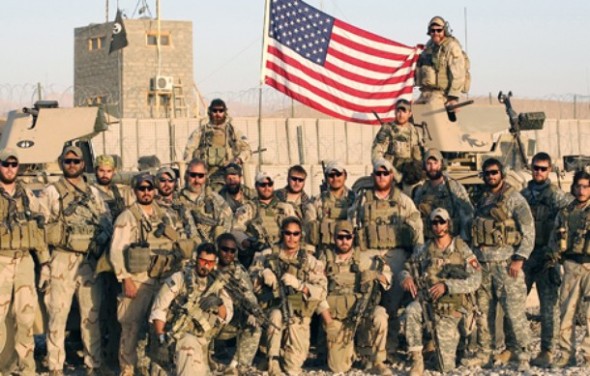
From Thom Shanker, New York Times: As other troops are withdrawn, Special Operations forces are expected to make up almost one-third of the American military presence in Afghanistan by next February. Their specialty — advising local military units on the front lines and hunting down top insurgent or terrorist leaders — will become the major focus of the alliance’s effort here either until American troops are withdrawn by the target date of December 2014 or the Afghan government asks them to stay past then.
On any day in Afghanistan, about 60 Special Operations teams are working with Afghan local police forces to provide security in villages; 50 more are assigned to Afghan strike forces, including 9 commando battalions and special police units and 19 provincial response companies. . . .
For American commanders, the transition to Afghan leadership on security has been a challenge, requiring a sharp increase in the intensity of training.
It has also required a significant reorganization of planning — and a change in the culture of American Special Operations forces, which, for the first time since the war began, answer to a single commander responsible for coordinating what had been separate, even conflicting, efforts.
“The dirty little secret among S.O.F. is that we were competing among ourselves,” said Maj. Gen. Tony Thomas, the senior commander overseeing all American and allied Special Operations forces, or S.O.F., in Afghanistan.
“We didn’t necessarily share information to the greatest extent possible,” said General Thomas, an Army Ranger with a long career in Special Operations. “It wasn’t about who got the credit or glory — but we were all so focused on our individual mission that we didn’t always synchronize the effort in the most efficient way for a common goal.”
There have been times when one strike team was targeting a suspected insurgent without knowing that a training team was courting his close kinsman to raise a local police force from their home village.
That began to change just under a year ago when General Thomas took charge of a new military organization here — the Special Operations Joint Task Force-Afghanistan, making him, in essence, the first to lead a division-sized deployment of Special Operations forces. Under his command are all the various “tribes” of American Special Operations forces: Army Green Berets, Navy SEALs and Marine Corps Special Operations units, as well as the top-tier strike teams that hunt down or kill high-value terrorist and insurgent leaders. . . .
While the bulk of the American and allied conventional forces remaining in Afghanistan will make the transition to a support role — and will be increasingly based at large military headquarters — the 10,000 American Special Operations troops will continue to be deployed alongside Afghan units. (Including NATO and coalition troops, the total Special Operations deployment here numbers 13,700.) . . .
Alliance commanders acknowledge that one of their greatest fears is an insurgent offensive on Kabul that, even if it failed, would so humiliate Afghanistan’s security forces that — like the Tet Offensive in the Vietnam War — it would undermine support for the mission here and in nations that contribute troops to the effort.
Insurgents have mounted exactly that type of raid in the past. And while Afghan and NATO officials said at the time that local security forces reacted with speed and lethal professionalism to subdue the militants, the reality is different. Special Operations commanders now acknowledge that the responses were slow and clumsy and that Afghan troops needed to be strongly urged to move in.
“The Afghan Army hadn’t performed that well in two previous tasks,” said one NATO Special Operations commander here. “Both counterattacks had to be heavily mentored. It came out O.K. in the end — but only after a lot of prompting from our side.” (photo: National Geographic)
Image: natgeo%205%2017%2013%20SOF.jpg
